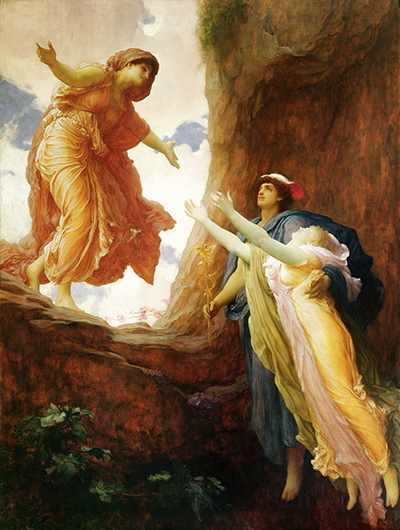Frederic Leighton, also known as Sir Frederic Leighton around 1878 - 1896, was a creative British painter, artist and stone carver. His works mostly delineated, scriptural, old-style topic and historical themes as well. Leighton was the conveyor of the most limited-lived peerage ever; after just a single day his inherited aristocracy ended up wiped out upon his demise.
The Return of Persephone - this work outlines the old Greek fantasy of Persephone, the girl child of the goddess of richness, Demeter. It is said that Persephone was captured by Hades, who was the leader of the realm of the dead. Demeter, having discovered that her girl was hi-jacked, lost control and transformed the Earth into a dormant desert. Simply after Zeus permitted Persephone to quickly leave the nation of shadows and come back to her mom once per year, Demeter then changed her indignation to leniency. Consistently, this legend was a purposeful anecdote of the resurrection of life in spring. In the Olympian form, she additionally turns into the partner of Hades when he turns into the divinity that administers the underworld.
The image of Persephone is a very notable one today. Her story is incredible and carries passionate power: a blameless lady, a mother's melancholy over her kidnapping, and extraordinary bliss after her girl is returned to her. It is likewise referred to regularly as a worldview of fantasies that clarify specific procedures, with the plunge and comeback of the goddess causing the difference in seasons. According to the Greek craftsmanship, Persephone is consistently depicted to be robed. Leighton was conceived in North Yorkshire to a working family. He went to school in London. After which he got his legal education first from the famous Edward von Steinle and afterwards from the Giovanni Costa centre.
He then started living in Paris from the year 1855 to 1859, where his path crossed with Millet, Ingres, Delacroix and Corot. In the year 1860, he decided to move to London, where he connected with the Pre-Raphaelites. In 1864 he turned into a partner of the Royal Academy and later became the president in 1878 up to 1896. His 1877 figure, of Athlete Wrestling a Python, initiated a renaissance in the British model, alluded to as the modern Sculpture. His artistic creations spoke to Britain at the extraordinary 1900 Paris Exhibition.
The Leighton Collection and Museum
Leighton is recognised as one of the incomparable Victorian designers. The Leighton Project meant to index, ration, photograph and display the accumulation of very nearly 700 works by Leighton at the Leighton Museum. It was completed somewhere in 2005-2007 with help from Heritage Lottery Fund. He was later knighted at Windsor in the year 1878; a baronet was made for him eight years after the fact. His work is known all over the world and is respected up to date.




